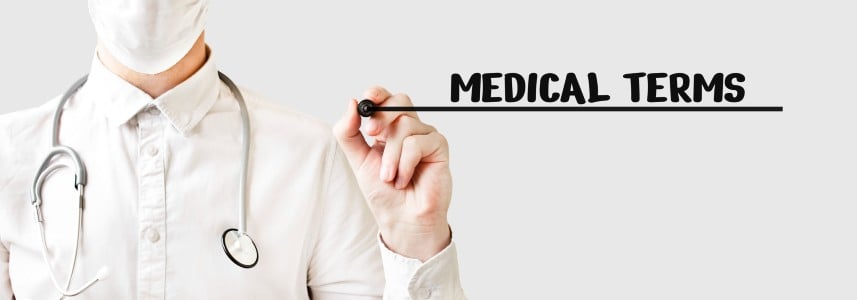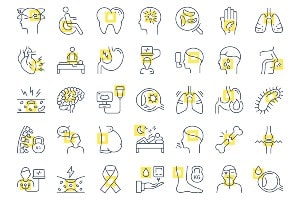About Sea Sick (Motion Sickness (Sea Sickness, Car Sickness))

Learn about the disease, illness and/or condition Sea Sick (Motion Sickness (Sea Sickness, Car Sickness)) including: symptoms, causes, treatments, contraindications and conditions at ClusterMed.info.
Sea Sick (Motion Sickness (Sea Sickness, Car Sickness))

| Sea Sick (Motion Sickness (Sea Sickness, Car Sickness)) |
|---|
Sea Sick (Motion Sickness (Sea Sickness, Car Sickness)) InformationHome remedies for motion sicknessAlthough few, if any, studies have examined the effectiveness of home remedies, people have used herbs such as ginger, peppermint, and tea as home remedies for motion sickness. In addition, some people respond well to acupuncture. OTC and prescription medication for motion sicknessOver-the-counter medications, and occasionally prescription medications, are used to relieve and in some cases prevent motion sickness. Some of the more common medications that can be used for motion sickness include:
Can motion sickness be prevented?In most cases, motion sickness can be prevented by taking the medications listed above, as they are often administered before a person is likely to experience motion sickness. Most of these medications are designed to prevent motion sickness rather than to cure it. There are other ways to reduce or prevent motion sickness without the use of medication. The following is a list of suggestions that may help reduce or prevent motion sickness:
How is motion sickness diagnosed?In general, motion sickness is diagnosed by the patient's history and physical examination. The individual's description of symptoms and the context in which they occur is most often sufficient to make the diagnosis. Laboratory testing is not generally required. What are causes of motion sickness?Motion sickness is caused by the mixed signals sent to the brain by the eyes and the inner ear (semicircular canals). If you cannot see the motion your body's feeling, or conversely, if you cannot feel the motion your eyes see, then it is likely that the brain will get mixed signals and the person will develop some aspect or symptom of motion sickness. What are the signs and symptoms of motion sickness?The signs and symptoms of motion sickness usually begin with a feeling of uneasiness followed by cold sweats and dizziness. Some people may exhibit pale skin and increased saliva production along with headache and fatigue. Nausea and vomiting usually occur after these initial symptoms. What is motion sickness?Motion sickness is the feeling you get when the motion you sense with your inner ear is different from the motion you visualize. It is a common condition that occurs in some people who travel by car, train, airplane or boat. Many people suffer from this condition if they ride on a roller coaster or other similar amusement park rides. Motion sickness progresses from a feeling of uneasiness to sweating and/or dizziness. This is usually quickly followed by nausea and/or vomiting. What is the treatment for motion sickness?Treatment for motion sickness can consist of medical treatment, simple changes in the environment (for example, sitting by the open window of a car), over-the-counter (OTC) medications and for some people, home remedies may be effective. In addition, some patients respond well to biofeedback training and relaxation techniques. When should I call a doctor for motion sickness?In most cases, a doctor doesn't need to be called for motion sickness unless the person starts to develop dehydration from persistent and intractable vomiting. In most people, once the motion has stopped, the symptoms slowly decrease and then disappear. Who is at risk for motion sickness?Although pregnant women and children are more susceptible to motion sickness, almost anyone that is traveling is at risk for motion sickness. For those people who travel on boats, seasickness can be considered a form of motion sickness. Other risk factors include the person's fear or anxiety about traveling, the mode of travel, poor ventilation in the traveling vehicle, and the inability to see out of a window to aid orientation. |
More Diseases
A | B | C | D | E | F | G | H | I | J | K | L | M | N | O | P | Q | R | S | T | U | V | W | X | Y | Z
Diseases & Illnesses Definitions Of The Day
- Noncancerous Colloid Thyroid Nodule (Thyroid Nodules) ‐ How are thyroid nodules diagnosed?, Introduction to thyroid nodules …
- Skin, Laser Resurfacing (Laser Resurfacing) ‐ CO2 Laser Resurfacing, Complications of Laser Skin Resurfacing …
- Malignant Fibrous Histiocytoma (Bone Cancer Overview) ‐ Are there any treatments or medications that relieve bone cancer pain? …
- Double Vision ‐ Is it possible to prevent double vision?, What are the symptoms and signs of double vision? …
- Ageusia (Taste Disorders) ‐ Are taste disorders serious?, Can taste disorders be treated? …
- Autism Screening and Diagnosis ‐
- Alpha-fetoprotein Blood Test ‐ In which situations are high blood (serum) levels of AFP used as a tumor marker? …
- Polymyalgia Rheumatica ‐ How do health care professionals make a diagnosis of polymyalgia rheumatica? …
- Stump Appendicitis (Appendicitis) ‐ Appendicitis definition and facts, Are there long-term consequences of appendectomy? …
- Gonorrhea (Gonorrhea In Women) ‐ Gonorrhea facts, How is gonorrhea diagnosed?, What are sexually transmitted diseases (STDs)? …